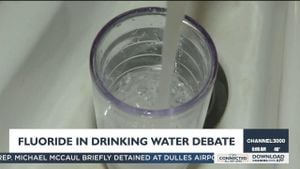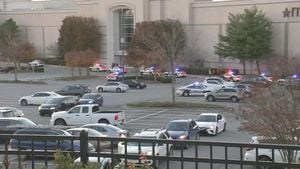NASA is facing some serious decisions about two astronauts, Butch Wilmore and Suni Williams, who could be stranded aboard the International Space Station (ISS) until early 2025. Originally expecting to return shortly after their June launch on Boeing’s Starliner capsule, they now find themselves caught up in significant safety issues affecting the spacecraft.
The launch took place on June 5, 2024, marking the first crewed test flight of Boeing’s Starliner. Unfortunately, concerns over thruster problems and helium leaks have pushed NASA to delay their return.
This potential extended stay could last until February 2025, significantly longer than the anticipated two-week mission. While not considered life-threatening, such prolonged exposure to the space environment could have serious impacts on their health, including muscle loss and changes to vision.
Interestingly, this is not the first time astronauts have faced long durations in space; NASA astronaut Frank Rubio held the record for the longest single spaceflight by returning after 371 days. His experience is valuable for researchers seeking to understand the physical toll of long-term space habitation.
NASA is diligently reviewing data to make the most informed decision possible. Ken Bowersox, NASA’s space operations mission chief, mentioned the agency is trying to “use the time wisely” before making any commitments.
There’s also the option for Wilmore and Williams to return on one of SpaceX’s upcoming missions. This could potentially allow them to leave the ISS sooner rather than later.
NASA’s safety chief, Russ DeLoach, emphasized the importance of considering all factors before deciding whether to have the astronauts return aboard the risky Starliner. He noted the agency wanted to make decisions based on comprehensive information rather than rushing forward.
Should they change directions and opt for SpaceX, it complicates logistics significantly. Two of the four astronauts slated for the next SpaceX ferry flight may have to change plans, as the spacecraft can only accommodate four passengers at once.
On top of this, the ISS has limited docking space for U.S. spacecraft. Boeing’s Starliner would need to vacate the docking port before the arrival of SpaceX's Dragon capsule, creating another layer of scheduling challenges.
Despite the turmoil, Boeing remains confident about Starliner's capabilities, claiming they can still safely bring their crew home. The company is awaiting NASA's final decision before making any moves.
Many astronauts have been preparing for this kind of uncertainty and effectively adapting to their work aboard the ISS. For Wilmore and Williams, who are seasoned space veterans, their focus remains on contributing to science and technology through their roles.
They’ve already begun working on experiments and maintenance during their time on the ISS, bringing their expertise to bear on the challenges faced by their fellow crew members. NASA’s chief astronaut, Joe Acaba, reassured the public about their commitment to using the capabilities of their astronauts wisely during this testing period.
NASA's reliance on SpaceX and Boeing for transportation to the ISS is part of its strategy to diversify and secure its future missions since the Space Shuttle program ended. While SpaceX has coped well after launching its first crew in 2020, Boeing has encountered multiple setbacks, costing over $1 billion before getting to this point.
Overall, NASA's challenge highlights the inherent uncertainties of space travel and the perseverance practiced by astronauts stationed aboard the ISS. How they navigate these unexpected turns could redefine not just the mission, but the future of commercial spaceflight as well.



